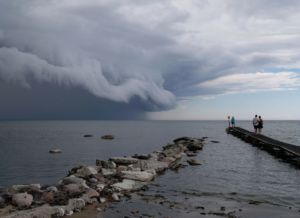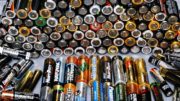When people experience bad cell phone service, they’re quick to blame the materials inside the building. That’s not always the case, though some people insist on it. I suppose we’re responsible for that, at least somewhat. We’ve been blogging about how metal and other materials in buildings and vehicles block cell phone signals. This might have given people the impression that if they have bad reception, it must be the metal. (Or the buildings, trees, and mountains, which we’ve also discussed.) Well, these things aren’t always the reason you can’t make or take calls or send texts. Here are four more things that can interfere with your signal.
1. Your Battery is Low
Sometimes the simplest answer usually explains the problem. (In philosophical terms, it’s called Occam’s Razor and it’s something more people should be aware of.) When it comes poor cellular reception, sometimes a low battery is the simplest explanation. So, before you curse out your phone or your carrier, check your charge. Chances are, the blinking red bar that’s telling you your phone is at eight percent charge is the reason or your problems.
Many people have experienced bad signal and thought something was wrong with their phone or their carrier. When they find out that a low battery was the culprit, they have one of those slap-your-forehead moments. I know all about this. One time, my wife and I took the kids on a Pokemon Go hunt and I started cussing up a storm about my “crappy” cell phone. Turns out, I just forgot to charge it that morning. Yeah, Mrs. Buckler had a field day with that one.
2. Bad Weather Does it, Too

Yup, it’s true. Bad weather can mess with your cell phone signal. Humidity, heavy cloud cover, and thunder and lighting, as well as rain, snow, and ice can do it. (Those conditions pretty much cover every area from coast to coast.) It all has to do with how these atmospheric conditions affect the electromagnetic waves that cell phones transmit and receive simultaneously.
So, if you’re trying to make a call during a thunderstorm, you might want to try later. Not because lightning will strike you through your phone, though. (This can’t happen since a cell phone isn’t connected to an electric current like a landline is.) While it might be safe to use your phone during a thunderstorm, it probably won’t be effective. It’s better to “ride the storm out,” like that old rock song says.
3. Your Blocking Your Antenna, Dude…
…Or dudette. We all can get in our own way sometimes. Since today’s cell phones have small, embedder antennas, it’s easy to block them. It can be something as simple as the way you hold your phone. If you cradle your phone with your head against your shoulder, for example, is a sure-fire way to block that antenna. Other times, it can be something as simple as your thumb drifting over and covering that embedded antenna.
Side note: when I think of someone blocking their cell phone antenna, I think of my mom’s picture-taking pictures. When I was a kid, digital technology wasn’t a thing. We took pictures with cameras that used film and flash cubes. Whenever my mom took a pic, there was a good chance that her thumb was going to drift in front of the camera’s eye and end up in the pic. Seriously, we have a photo album called “Mom’s thumb.” It features Mom’s thumb at Sea World, Mom’s thumb at Disneyland, Mom’s thumb at Niagara Falls… you get the picture. (Pun intended.)
4. It’s in the Stars…

…Well, one of them, anyway. What am I talking about? The sun. Yeah, that huge ball of burning gasses in the sky can mess with your cellular signal. Here’s how it works:
-
An eruption on the surface of the sun, aka a “solar flare,” creates shock waves.
-
These shock waves travel through space.
-
These waves disrupt the signals sent to and from satellites.
-
The shock waves also cause changes to Earth’s magnetic field.
Chances are good you probably won’t even know a solar flare happened. These things are tracked by places such as The Stanford Solar Center and other agencies that monitor space weather. (Unless you’re following these events online, which is always a possibility.) If not, it’s no big deal. Here’s the most important thing you need to know about solar flares: the effects are temporary. In most cases, you won’t even notice the interference because it might have happened while you weren’t using your phone.
The Cell Phone Booster Experts
So, now you know that cell phone interference isn’t ALWAYS due to metal and other building materials. It could be a number of things that are affecting your reception, some of them you can control. (Note: buildings materials are still the biggest culprit.) Whatever the case, Solid Signal has the best solution and that’s a cell phone booster. If you haven’t been reading this blog for the past few years, a signal booster is a device that pulls in weak cellular signal, amplifies it up to 32 times, and rebroadcasts that boosted signal in your home or vehicle. This helps put an end to dropped calls and missed texts.
Here are the most important reasons why cell phone signal boosters are great for buildings and vehicles:
-
These devices work with all cellular devices and wireless carriers.
-
It’s a one-time purchase with no monthly dues or fees.
-
You don’t need Wi-Fi or a broadband connection for these devices to work.
We carry a full line of weBoost and Wilson cell phone boosters for homes, businesses, and vehicles. We also carry signal boosters from Surecall, Hiboost, Smoothtalker, and Uniden. Solid Signal also has something that’s equally important and that’s a team of cellular signal booster experts who can help you. They’ll answer your questions, make professional product recommendations, and more. If you’re ready to know more, call us at 888-233-7563. You also can fill out the form below and send it to us.





